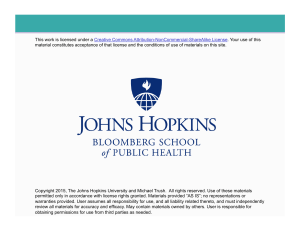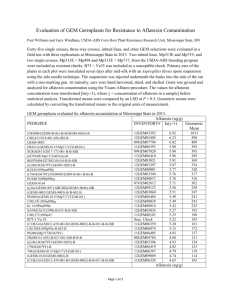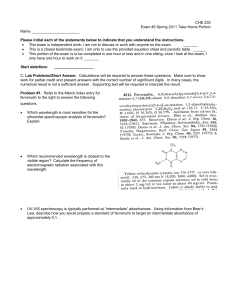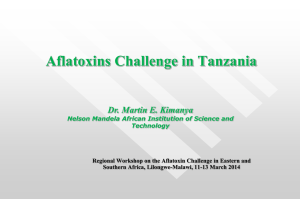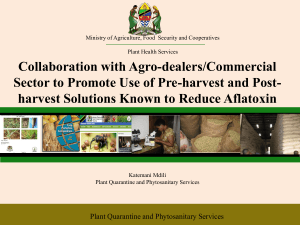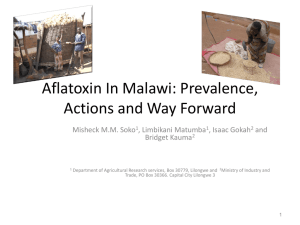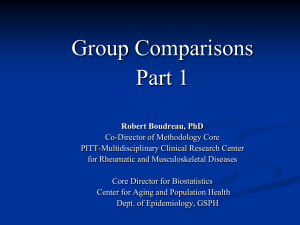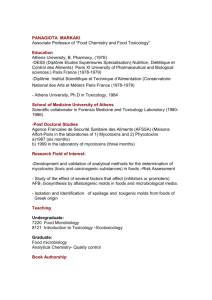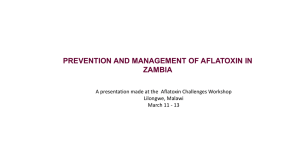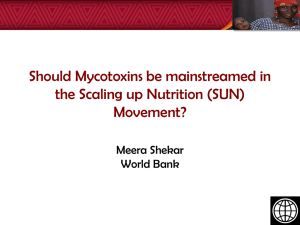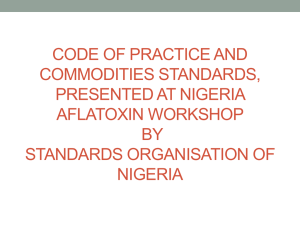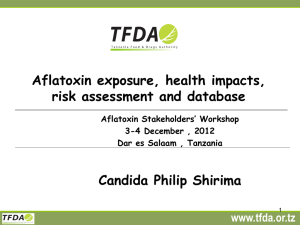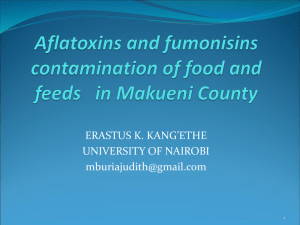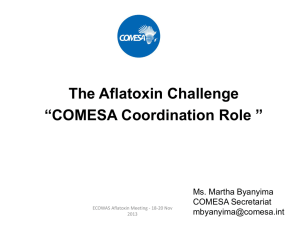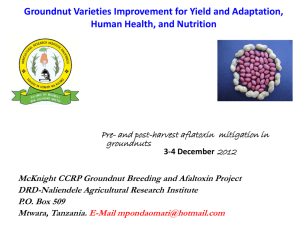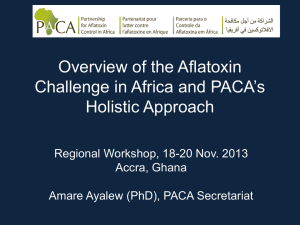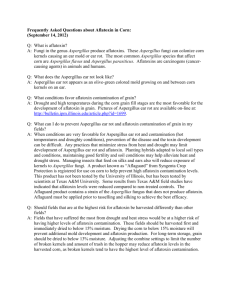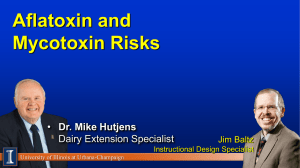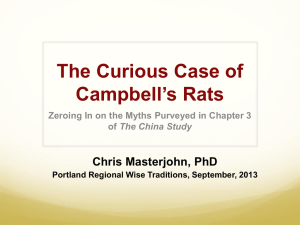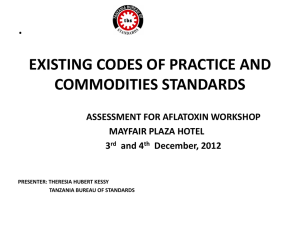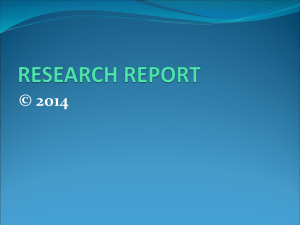Agriculture research, engagement, & tools
advertisement
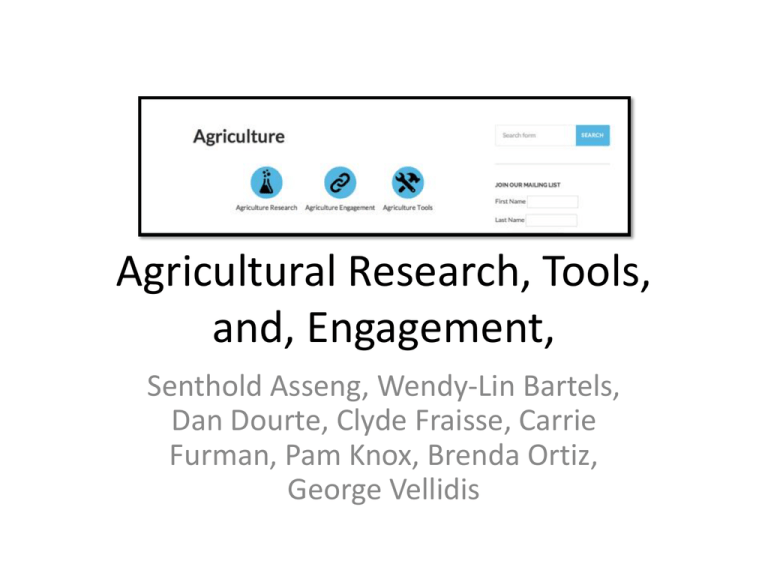
Agricultural Research, Tools, and, Engagement, Senthold Asseng, Wendy-Lin Bartels, Dan Dourte, Clyde Fraisse, Carrie Furman, Pam Knox, Brenda Ortiz, George Vellidis Exploring a) decadal variability and b) ensembles to improve seasonal forecast skill for the southeast USA A B Di Tian, Senthold Asseng, Chris Martinez (UF), Vasu Misra (FSU), Davide Cammarano (UF), Brenda Ortiz (AU) Simulated wheat yields anomalies (-) Year (-) Time series plot of Wheat yields from 1903 to 2008 at North-AL original time series after standardization 11-year moving average 5-year moving average Melissa A. Ramírez-Rodrigues, Senthold Asseng (UF), Lydia Stefanova (FSU), Brenda Ortiz (AU), Clyde Fraisse, Diego Valderrama d and Salvador Gezán (UF) El Niño-Southern Oscillation (ENSO) Effects on Hessian Fly Infestation in the Southeastern USA Prem Woli, Brenda Ortiz, David Buntin, Kathy Flanders Objectives The HFI prediction model was based on: - To examine the effect of ENSO on Hessian Fly Infestation (HFI) in the Southeastern USA. - To explore relationship between HFI and weather and wheat area. - To assess the impact of HFI on wheat yield as influenced by ENSO. - Temperature and Precipitation of Aug-Sep (TAS, PAS) and Oct-Feb (TOF, POF) periods PLUS - Change in wheat area in the preceding year (ΔWA) Results Hessian Fly Infestation was significantly lower in El Niño than in the other phases of ENSO HFIPGriffin = 0.012ΔWA + 0.045PAS – 0.017POF – 5.574TAS + 3.139TOF + 112.3 HFI and Yield by ENSO and Variety Corn Aflatoxin Contamination Risk Prediction Based On a Drought Index Damianos Damianidis, Brenda V. Ortiz, Gary L. Windham, Prem Woli Assessing the risk for aflatoxin contamination preplanting or in-season could be used to support changes to management practices Objectives Results Aflaroxin risk for two soil types @ 1 wk before silking – To model the probability of aflatoxin contamination using the Agricultural Reference Index for Drought (ARID). – To determine time windows during the growing season when changes in drought conditions will change the risk for aflatoxin. – To determine how aflatoxin risk changes are affected by soil type and corn hybrids Methods – Logistic regression was performed to test the relationship between monthly ARID and corn aflatoxin level exceeding 20 ppb - The highest risk to have aflatoxin occurs the week before silking. - ARID can be used to predict Aflatoxin risk. - As ARID values increase, aflatoxin risk increases. Risk changes by soil type. Evaluation of SimCLIM Performance in the Southeast Yawen Bao, Gerrit Hoogenboom, George Vellidis • Evaluated the performance of SimCLIM for generating climate projections of specific locations. • 15 downscaled GCMs were not significantly different. • SimCLIM can provide good projections for climate mean but not for variability. Maximum Temperature Box plots of projections based on 15 GCMs and observations Soil Field Capacity Calculation Using the van Genuchten Model for Irrigation Scheduling and Drought Resilience Xi Liang, Vasilis Liakos, George Vellidis Soil water characteristics, e.g., FC, ψm at FC, and PWP Soil water release processes AgroClimate Components 1. Decision support tools • • • • • 2. 3. 4. 5. Climate tools Crop development and yield Drought indices Crop diseases Footprint calculators Forecasts and outlooks Monthly climate reports Information about management practices to increase resource use efficiency and reduce risk Information about climate-related topics Recently released tools: Climate risk - Maps Tri-State Working Group Federation of Southern Cooperatives Engagement with Stakeholder Groups Georgia Organics Conference Southeast Climate Extension Project Recipient of the 2014 USDA NIFA Partnership Award - Multistate Efforts Clyde Fraisse, Project Director Southern Region Extension Climate Academy (SRECA) “On the CASE” Blog Climate and Agriculture in the Southeast Pam Knox Agricultural Climatologist Animal Agriculture in a Changing Climate Mark Risse and Pam Knox Course statistics: • About 200 people have registered for the course • 53% have completed the course (15 hours) • Participants earn 10 hrs of Continuing Ed credits • Post-course survey shows that the participants are more open to discussing climate change issues with their clients
